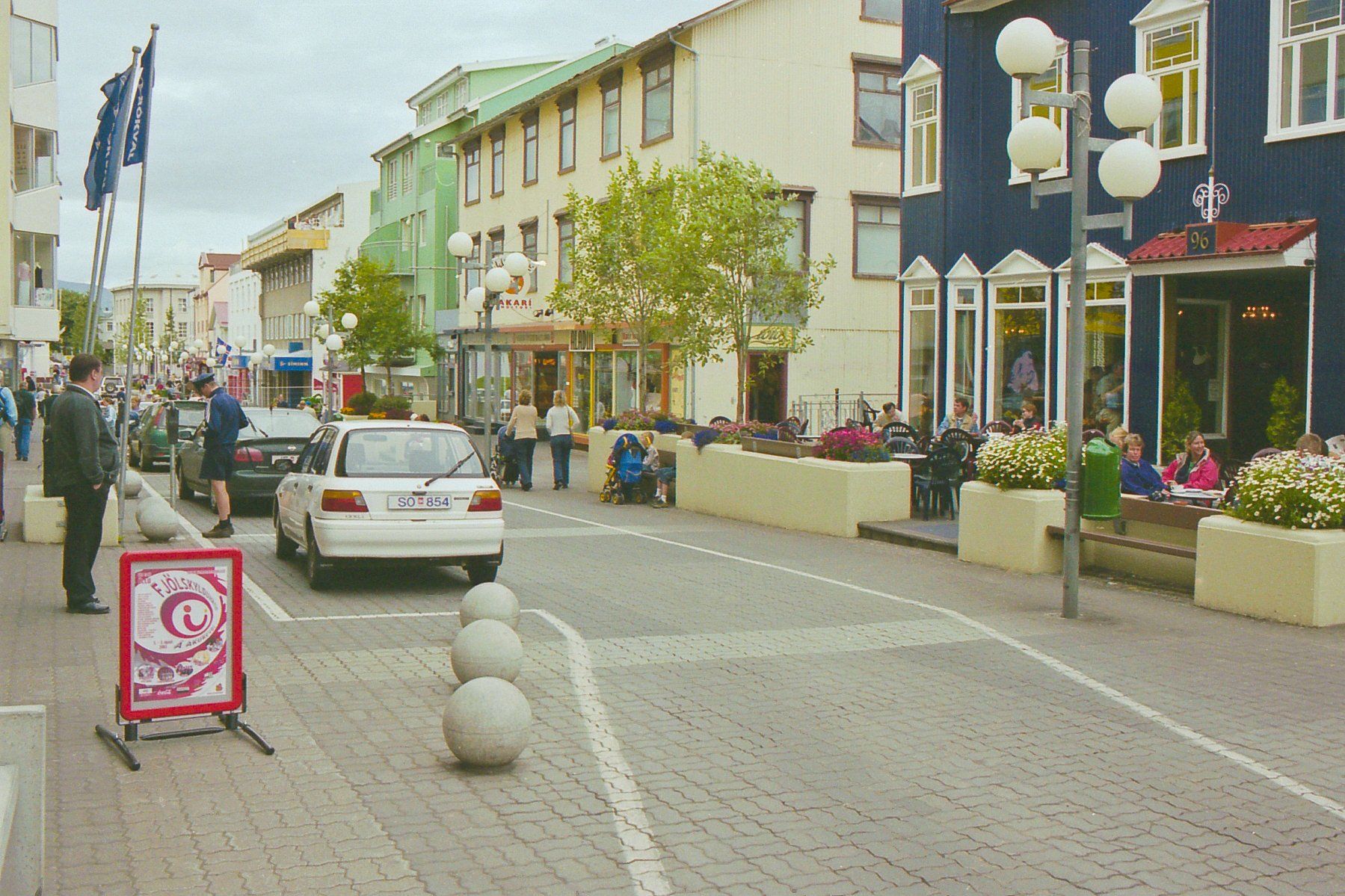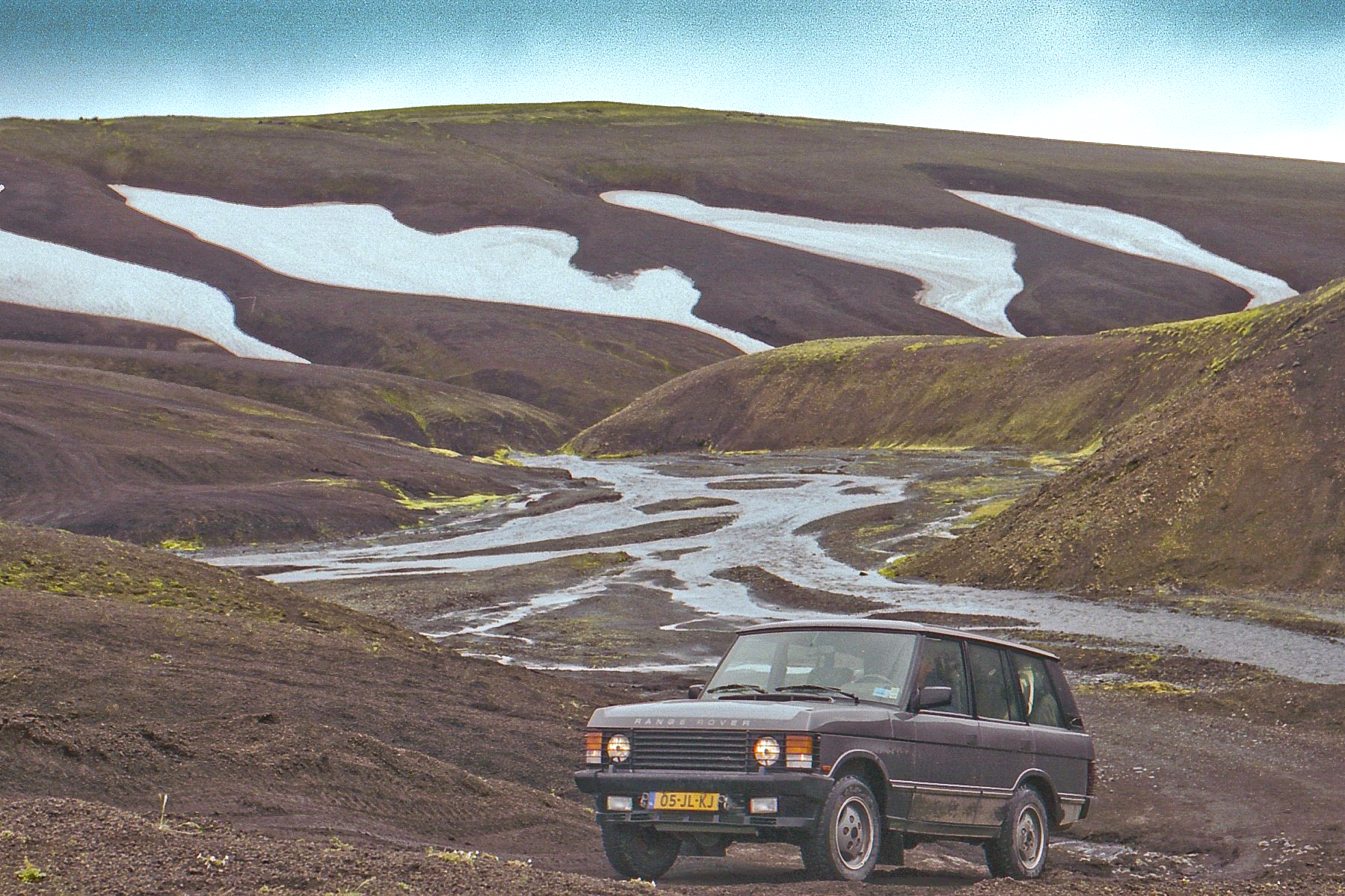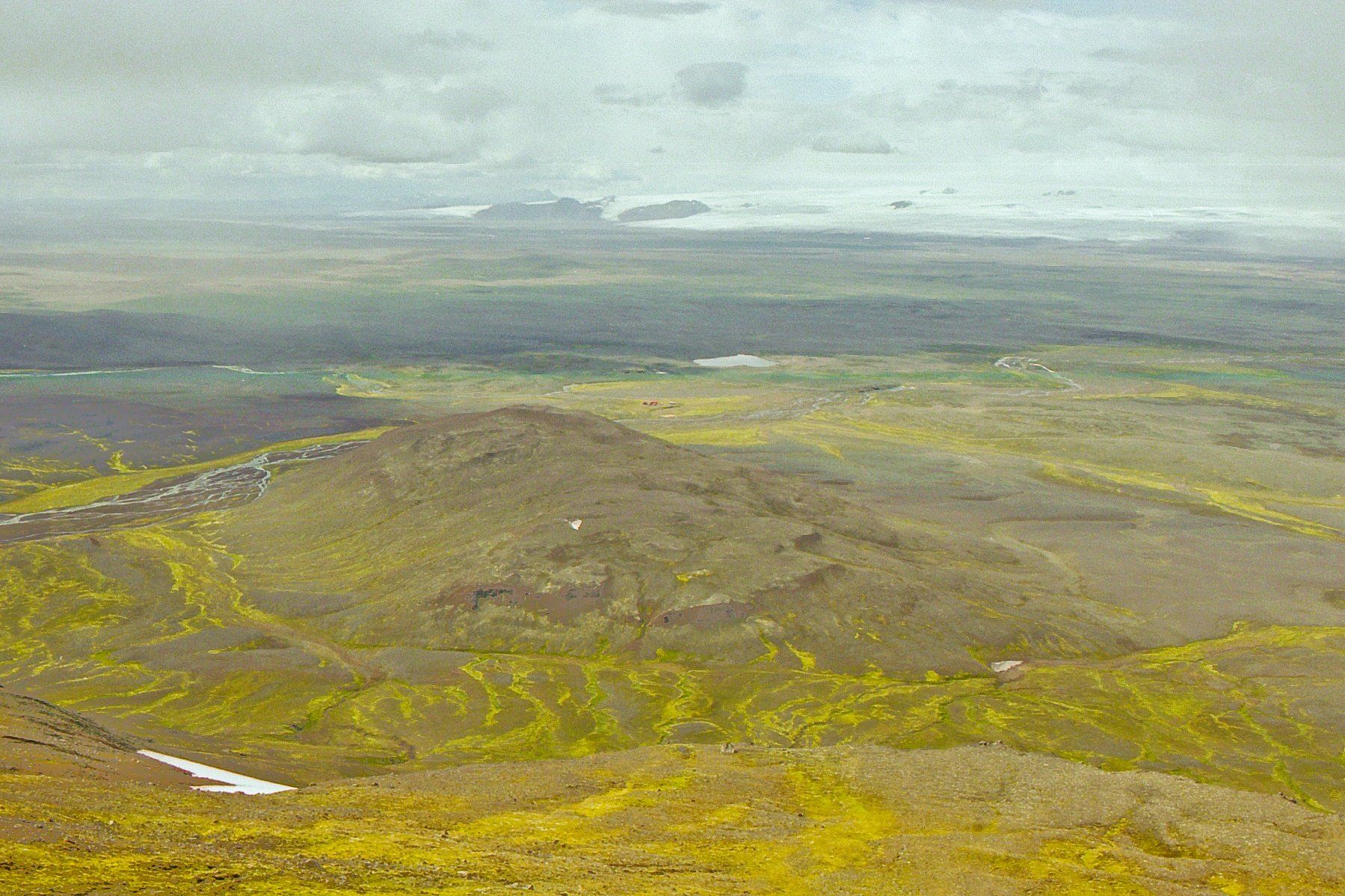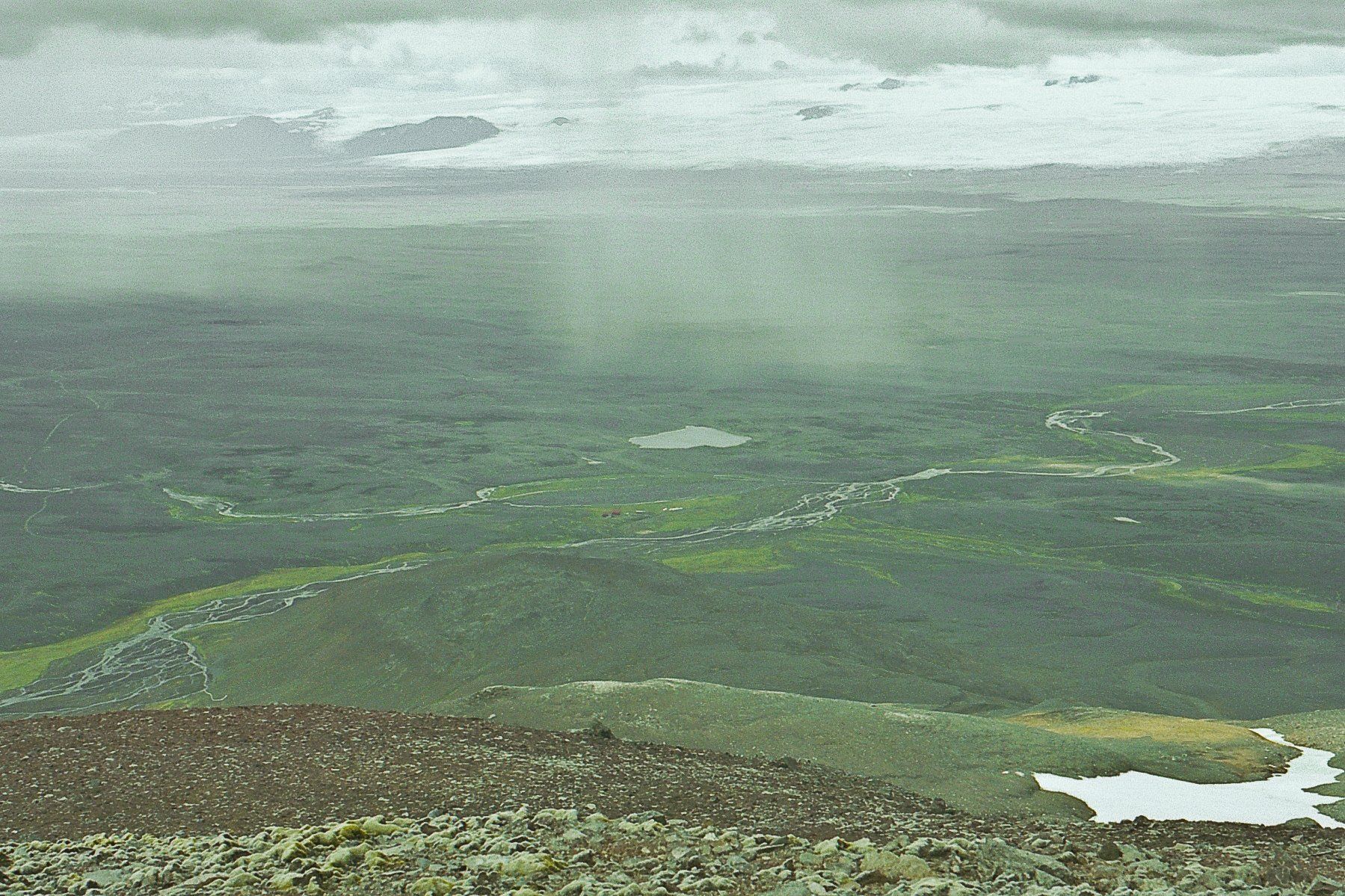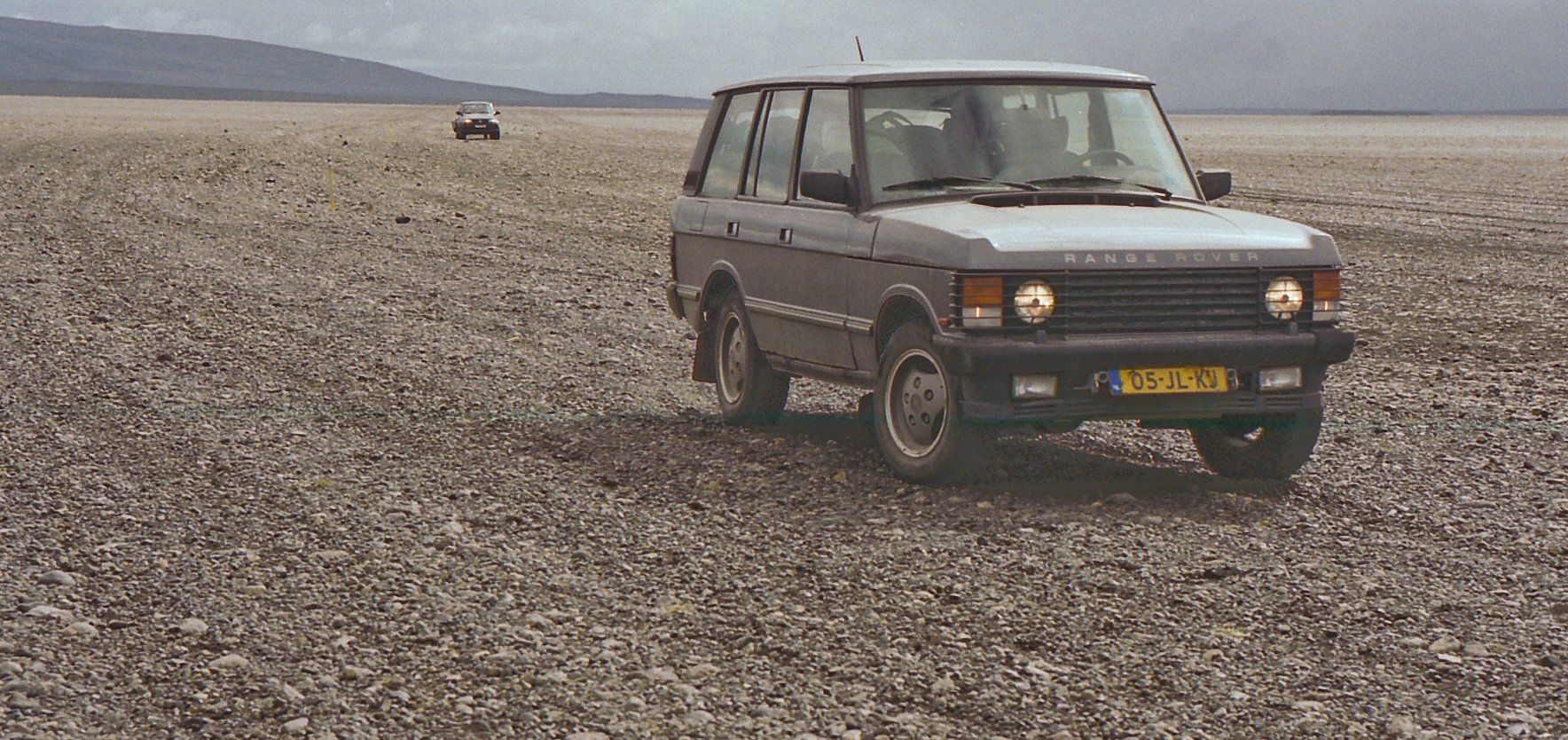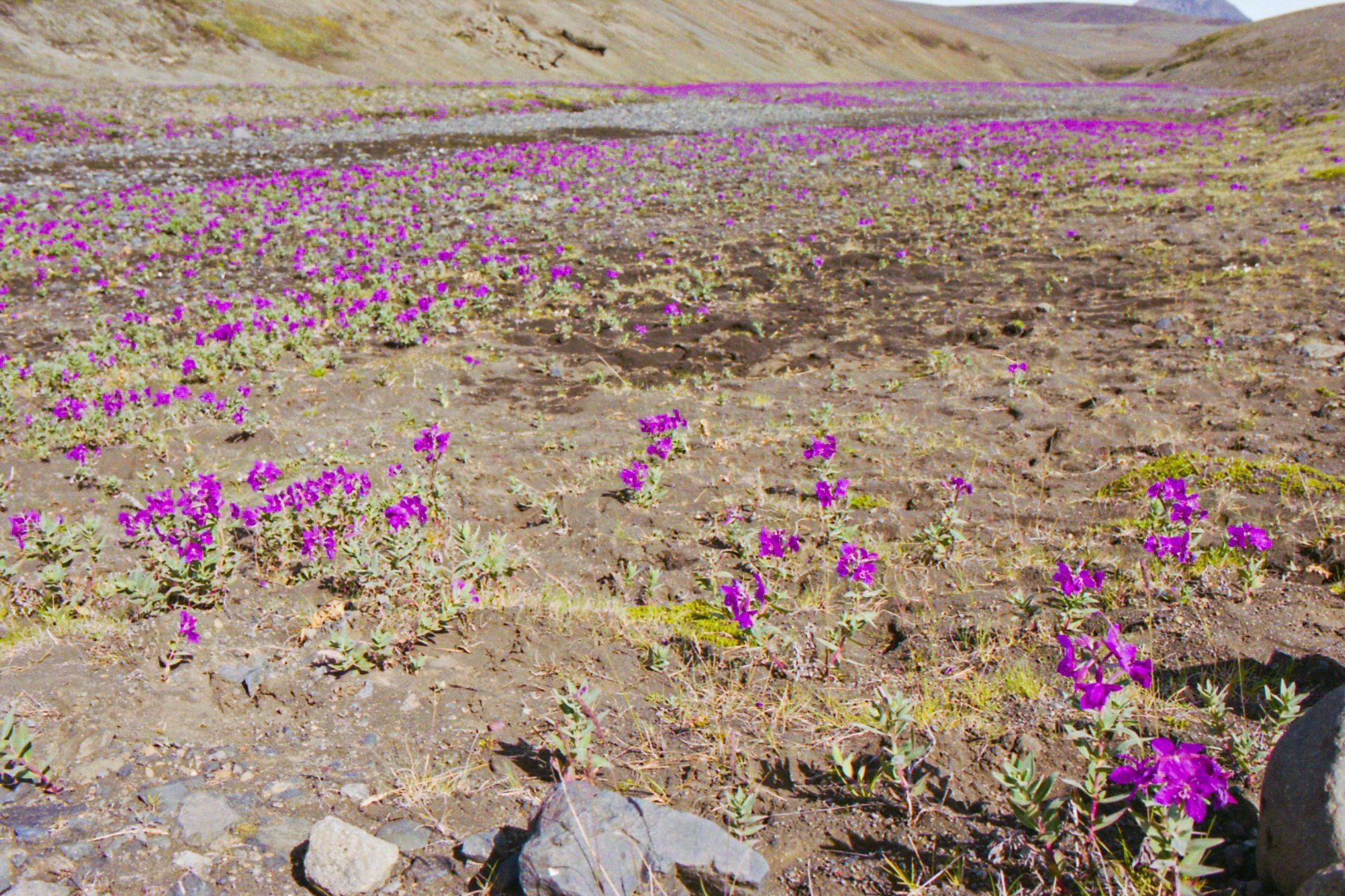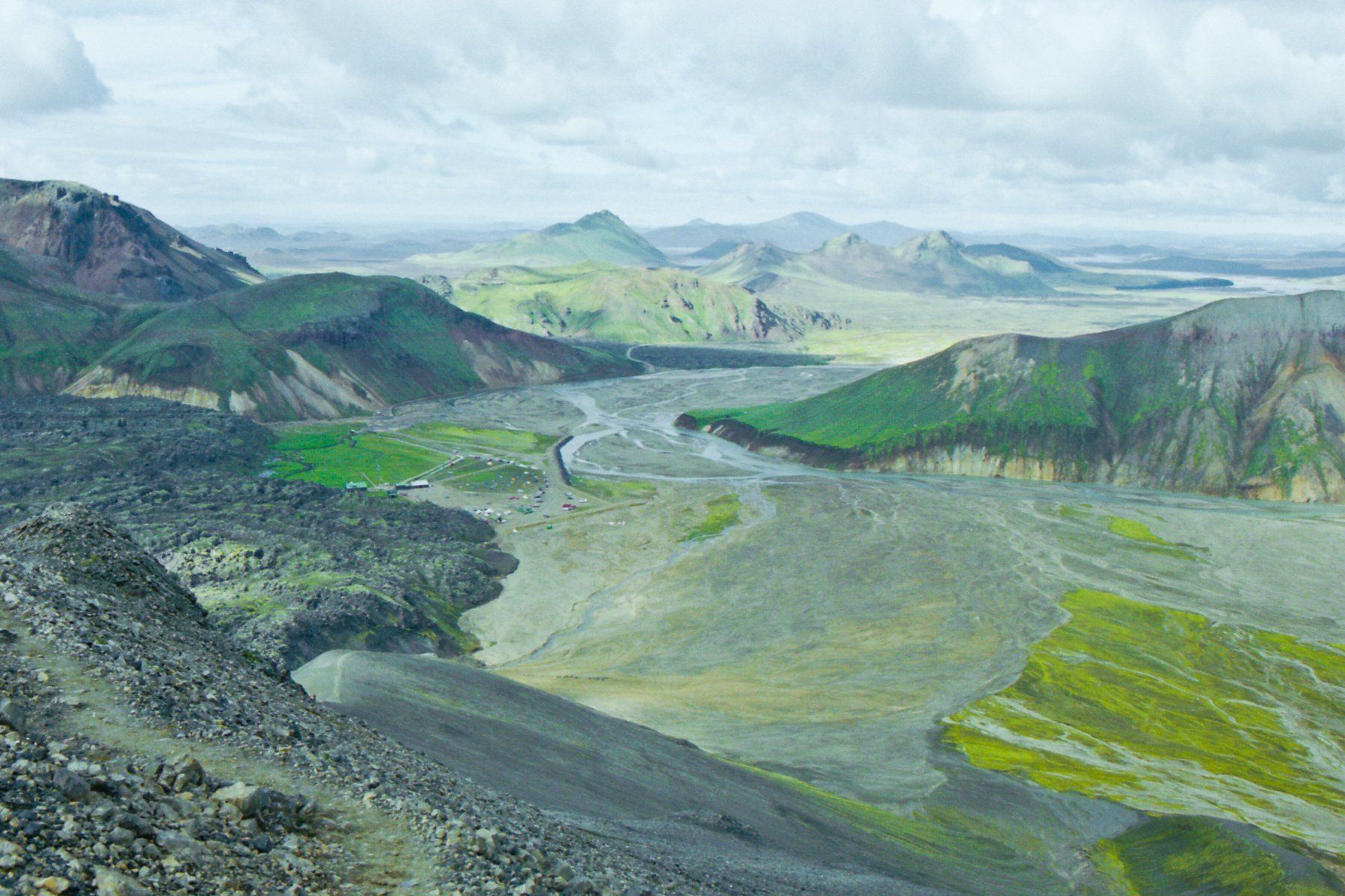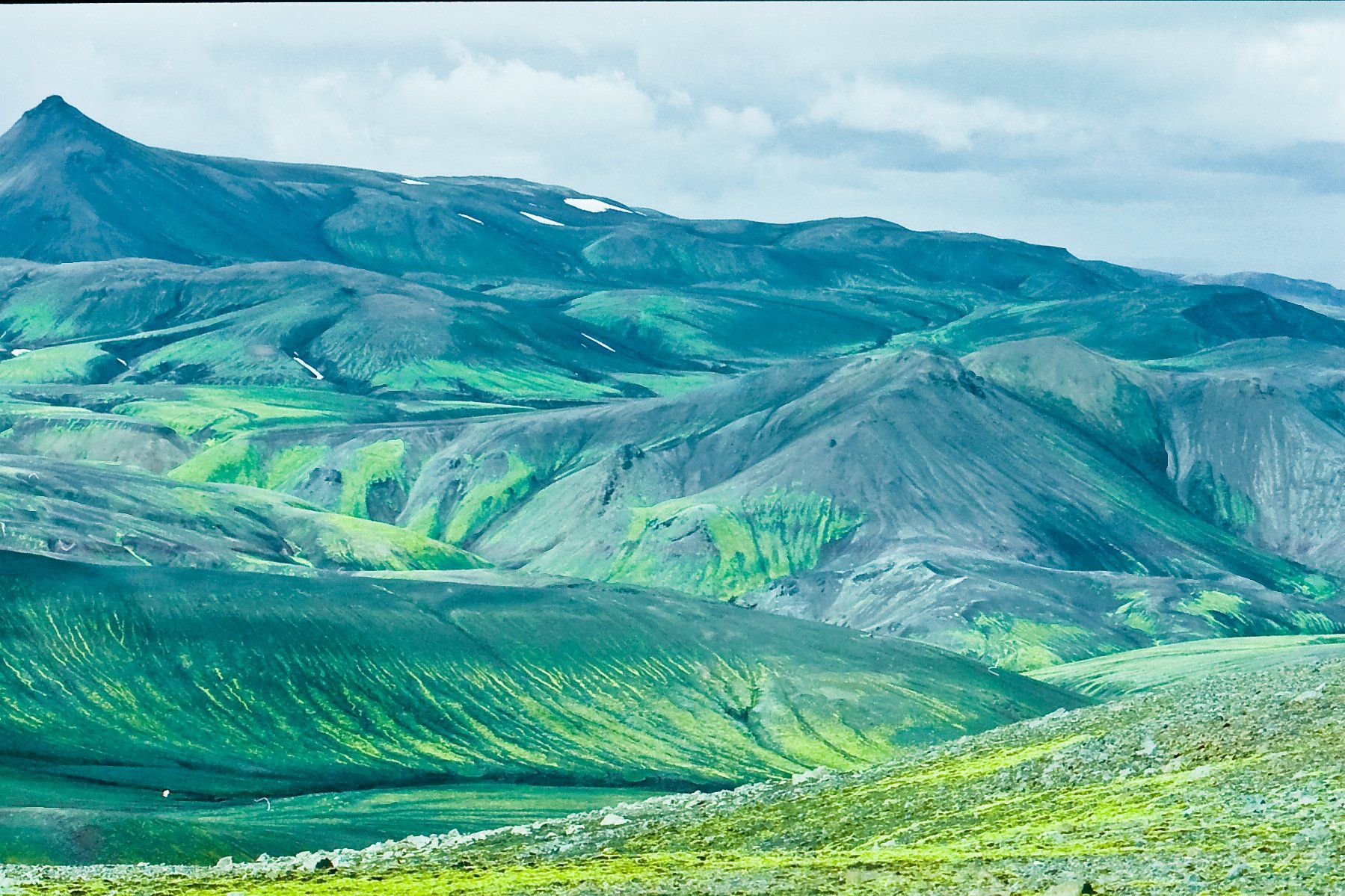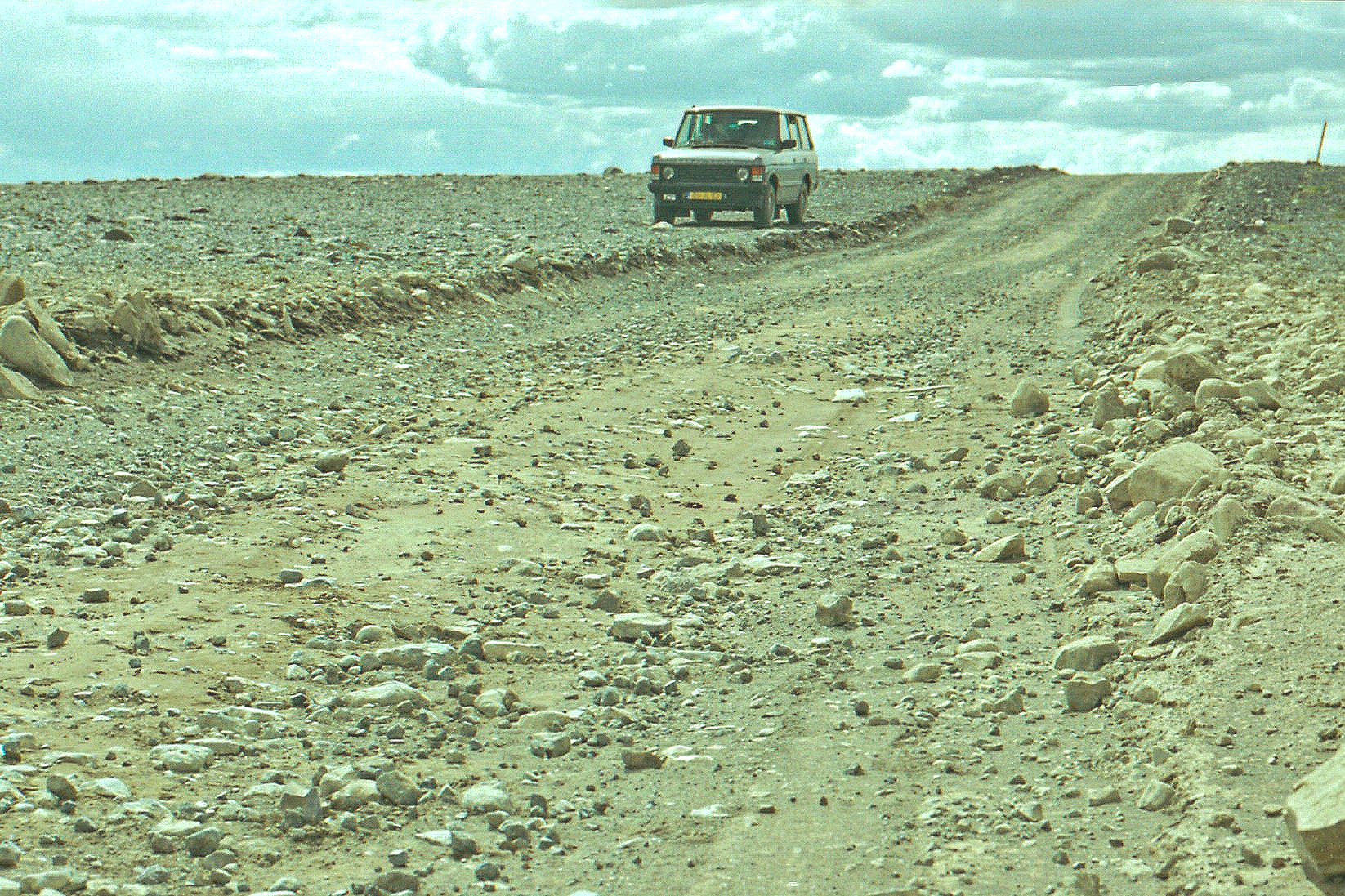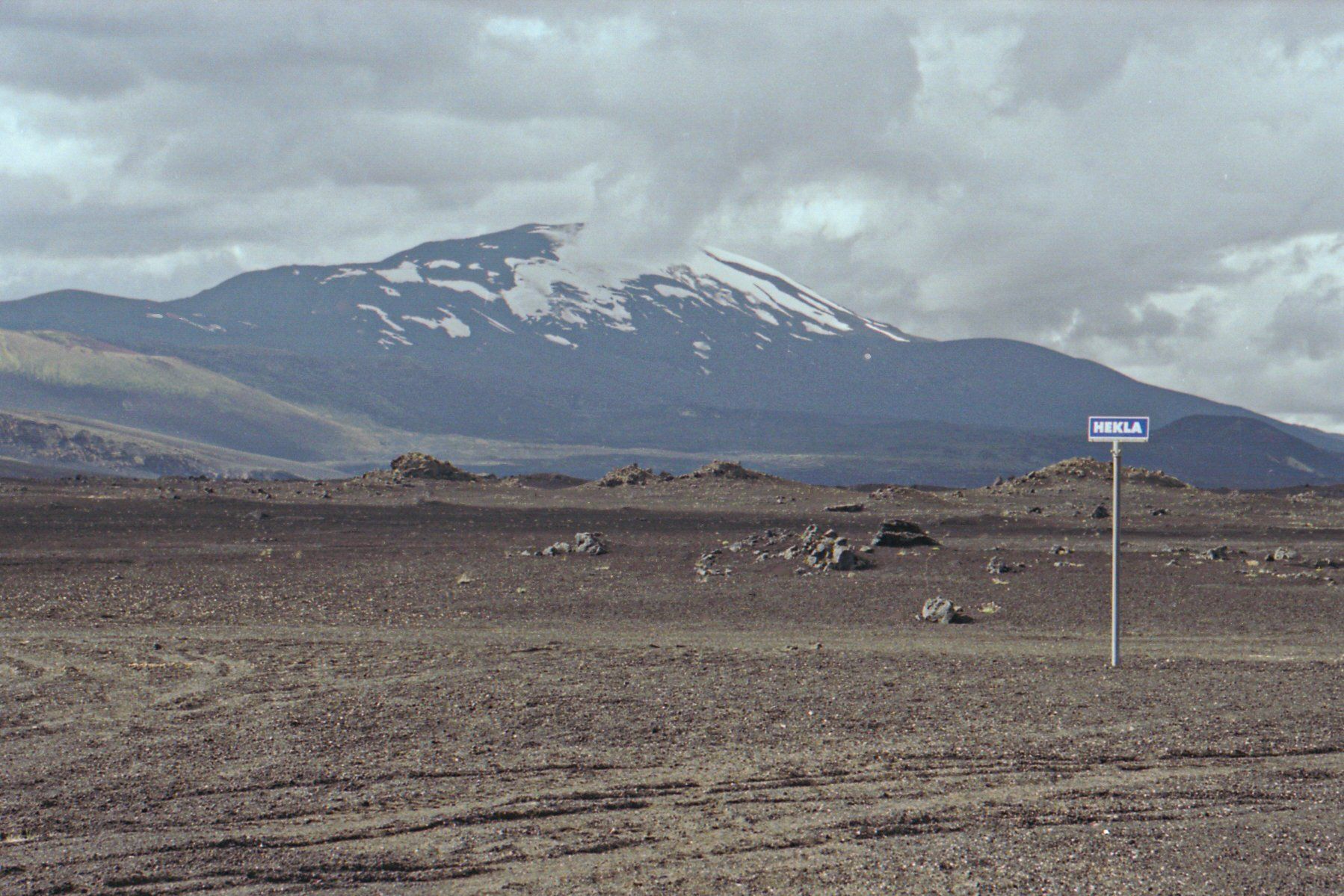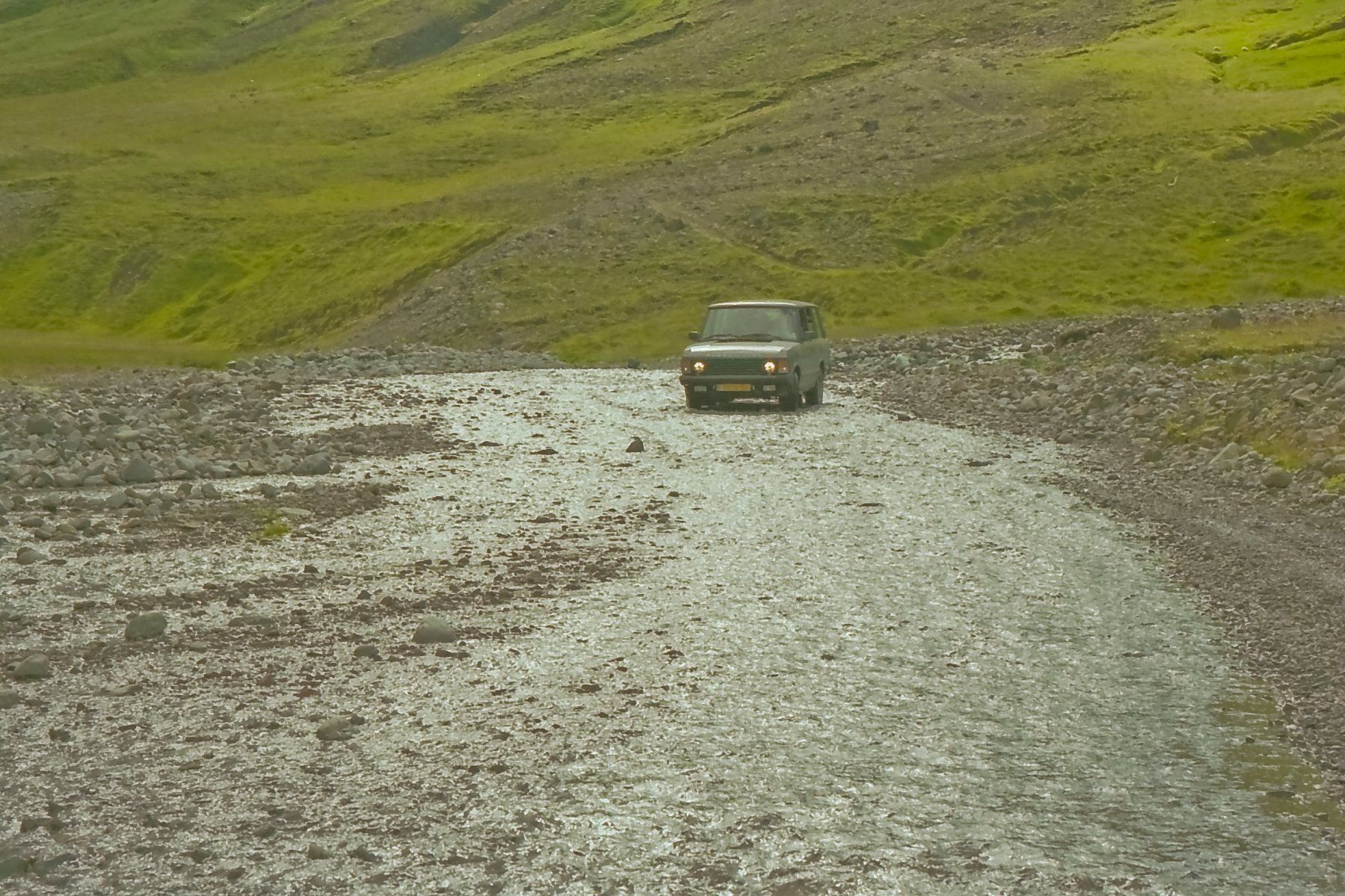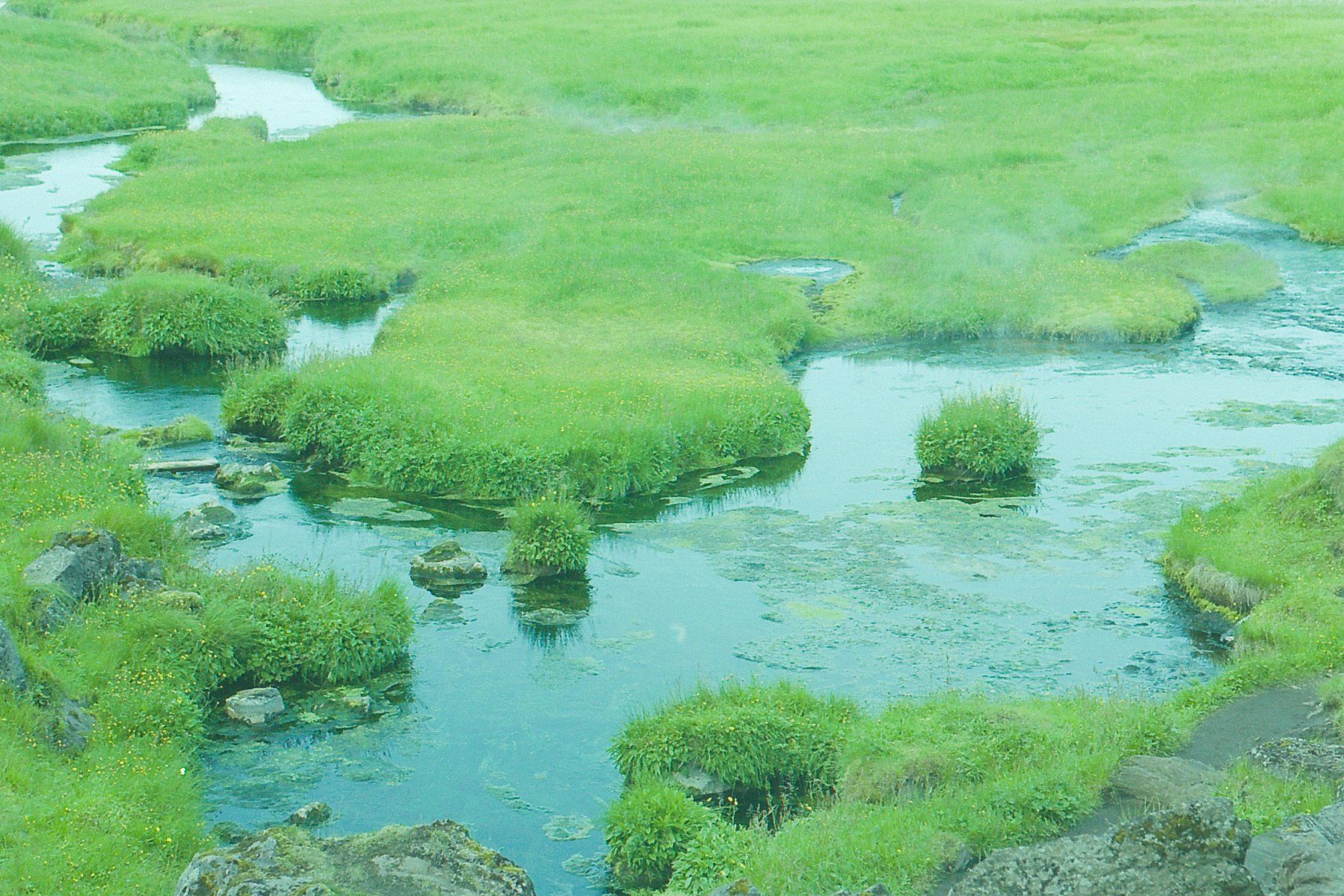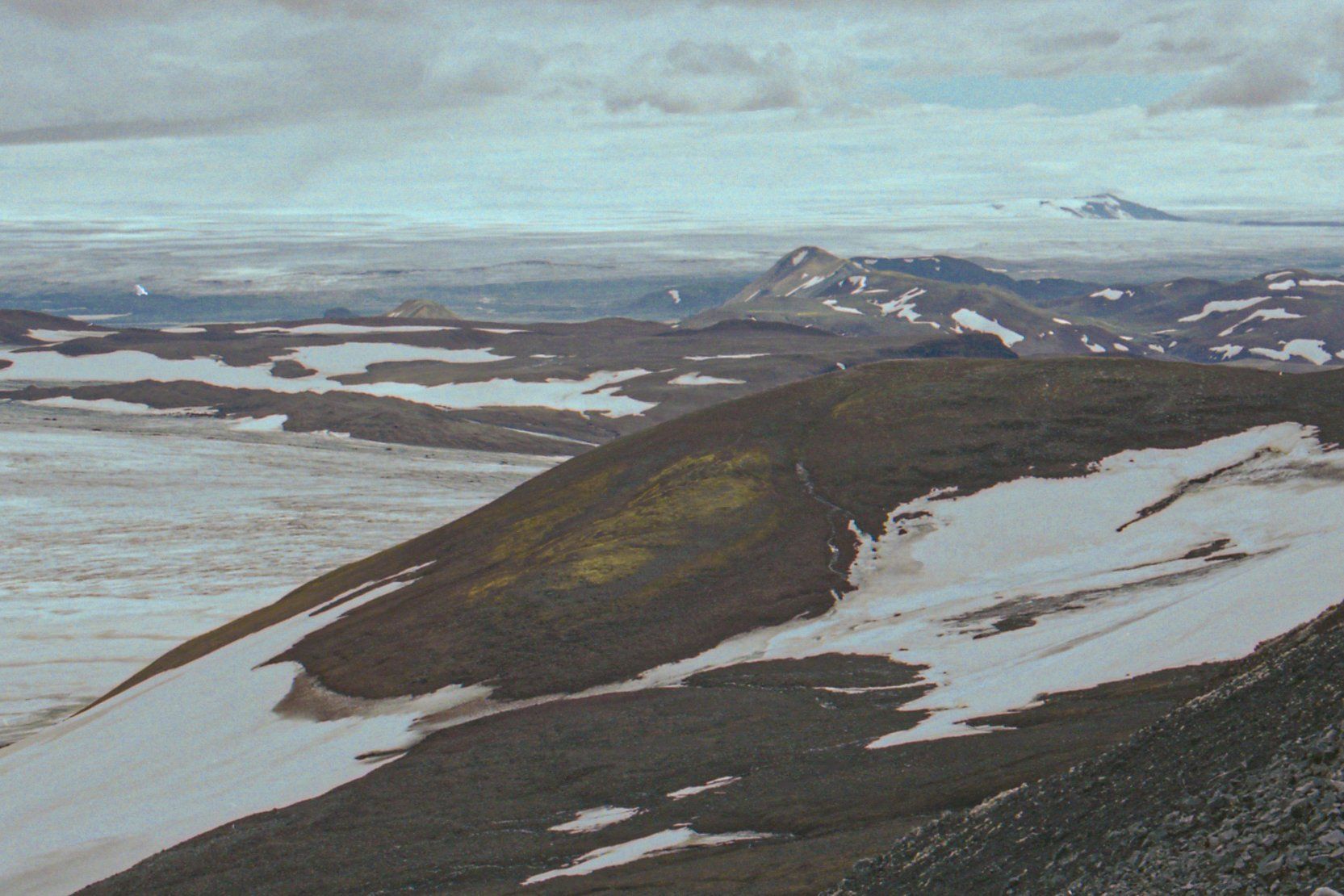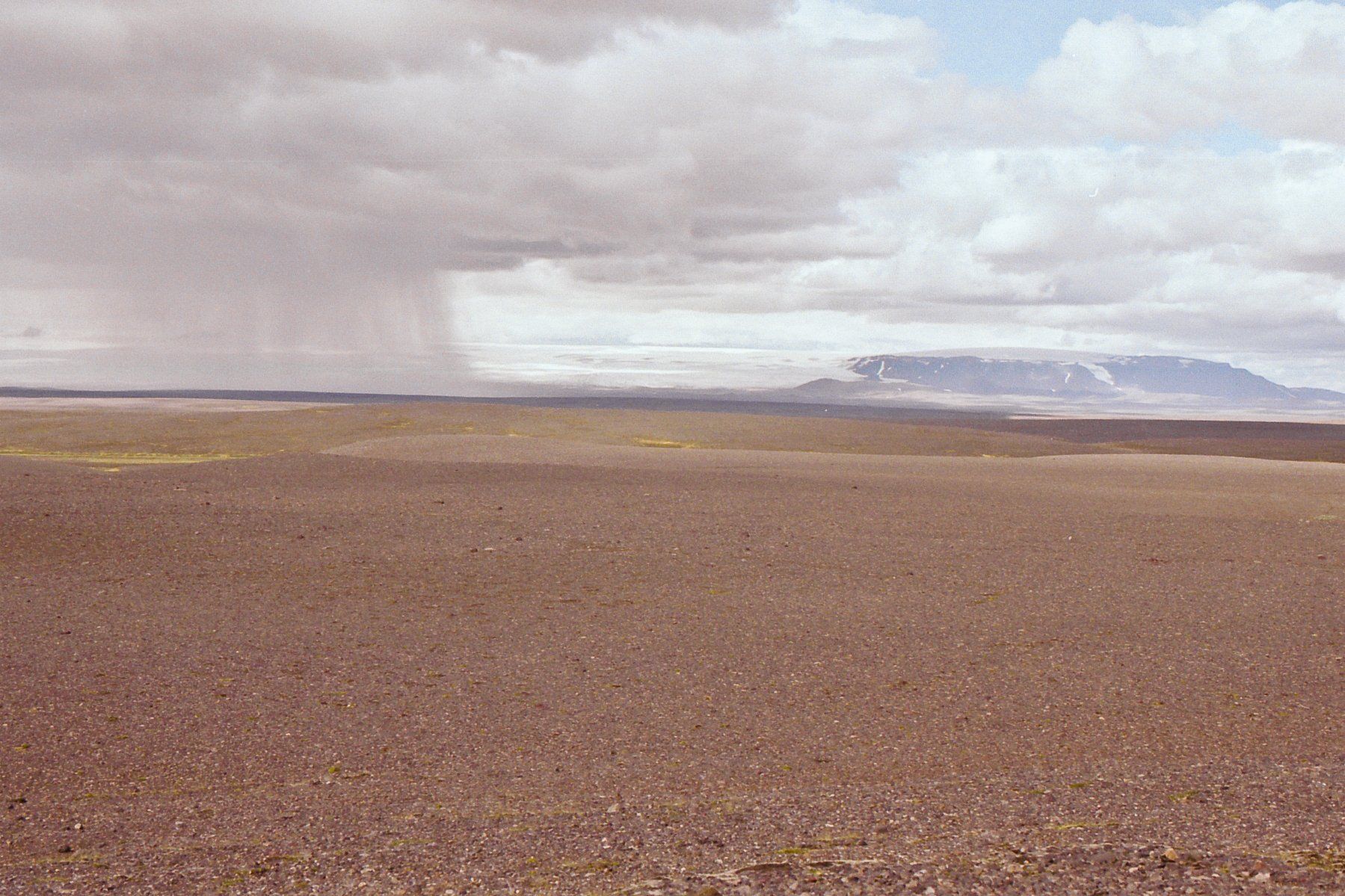About Iceland
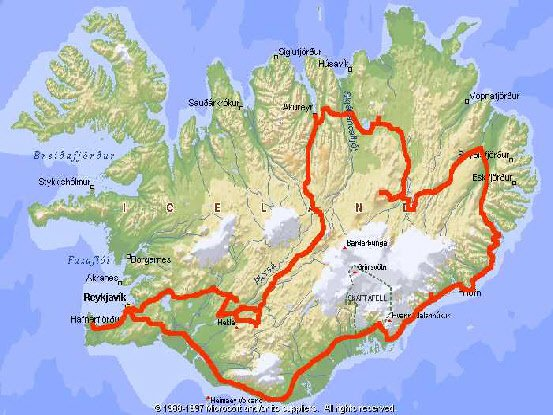
What came before
An impulsive decision led a friend from school and me to spend our summer holidays in Iceland. We wanted to try something different from the usual European holiday destinations. So we booked a plane ticket, a bus pass, and off we went. We quickly learned that taking the bus in Iceland requires a clear plan. There's only one bus a day, and if you get off too early, you're stuck where you are and have to hope for a place to sleep! Luckily, that only happened to us once. We decided we had to come back again. This country was so beautiful, and we couldn't see enough of it from the bus, we didn't have enough freedom to move around; we wanted to go straight through! We decided to save up for another trip. But times changed, we lost touch, he started a family, and the wild hairs became a bit tamer. But my dream remained. In 1993, I bought my first Land Rover. It absolutely had to be an 88 Series III, because that was the only true Land Rover, I thought then, and still do. Keeping a 1974 Land Rover 88 running was expensive, and there wasn't much left over to go on long-distance vacations. Lots of practice at club events and a fantastic 4x4 vacation with Kangaroo showed me the 88's possibilities and limitations. I got a unique opportunity when I could buy a real Range Rover for a bargain, and with a heavy heart, I traded the Series III for the Range.
What a difference, what comfort, what power, and how expensive! Especially when it turned out the transfer case had failed. "Luckily," there was a good alternative: an even nicer Range Rover! After a year, the money was definitely gone, and it took a long time before I could afford another Land Rover.
It's now 2002. I've saved up some money and am looking for a Range Rover. With my previous experiences in mind, I've fallen for the comfort. During the week, I drive a modern lease car. Every weekend, I have to get used to the quirks of an old car. Bouncing over rough roads, swerving due to the indirect steering, and sweating when I'm trying to park.
Given those experiences and the expected poor roads in Iceland, it's nice to be able to drive a comfortable car. It turns out that luxury isn't a luxury, but part of the preparation! Good road manners ensure relaxed driving, so you'll be refreshed after a long drive. Later, it turns out that even more luxuries contribute to a successful trip...
Preparing for Iceland trip
Now that A was said, B had to follow. I realize that a crossing alone is an expensive affair, and besides, being alone is being alone. Sharing your experiences with others is an essential part of a journey. I couldn't find anyone in my immediate circle of acquaintances who had the opportunity to join me. It was now December 2002, and I wanted to make the trip in the summer of 2003. The idea arose to look for travel companions myself. A maximum of four, I thought. The idea spontaneously arose to set up a website with information about Iceland and a call for travel companions. That was a good idea. After a tentative first attempt with a one-page website, I got the hang of it, and creating the website became a hobby in itself. I also didn't forget the goal, and soon responses came with tips and questions. Time was running out, but by May I had three travel companions, my maximum. A trial weekend in the Ardennes and a few conversations were all we knew about each other. Two of them had already traveled through South America together for six months. If you can do that, you know what collaboration is all about.
The preparation
I had already started this at Christmas. An informative visit to a Land Rover specialist and some ideas of my own led me to the following points:
Underbody protection, headlight protection, front and rear towing hooks, replacement shock absorbers, a general technical inspection, spare parts, and new towing equipment. An appointment was made for the details, and everything was supposed to be done in April.
I searched the internet for information about Iceland, but nowhere did I find any clear information about the quality or condition of the roads. It wasn't until I was at the Iceland Tours trade fair in Utrecht that I spoke with someone who could tell me from personal experience what it's like there. He reassured me that good equipment is half the battle. And if you're out and about in a Land Rover, you can hardly go wrong...
Preparing the car took a long time, far too long. Misfortunes never come singly, and bad luck followed me. It took until a few days before the ferry trip for the car to be ready. Stress keeps you sharp, but I don't want to experience it that sharp again.
The crossing.
Through Askja Travel, you can have your car shipped from Rotterdam by the Eimskip shipping company and fly back yourself. It seems like a luxury, but my considerations were: if you go on the ferry yourself, it would take at least two days of sailing, and two days back again. I'm not in education, so my time is limited. Even going via Denmark or Sweden takes a long time, and the kilometers you'll cover cost time and money (the range runs on 1 liter per 6 liters of gasoline anyway). Although a bit basic, customs clearance and delivery were handled quite well. There was even a nice printout ready for me, showing how to get back to Central Station from the port by public transport!
We'd packed the car with all the heavy gear we wouldn't need for the first night. Tents, hiking boots, provisions, etc. That would save us a lot of time on the plane. I don't like flying, but the flight was neat and tidy. I had my GPS on the plane, which was nice. I could track exactly where we were flying, how fast we were going, and how high we were going. After entering our destination, Reykjavik, I even knew how long it would take. You do have to sit by the window, but that goes without saying.
Finally Iceland
Arriving in Iceland isn't pleasant. Keflavik International Airport lies in a bleak, barren, and uninviting landscape. From there, a bus takes me to Reykjavik, a journey of about 40km through a bleak landscape. I insist that the sun does shine sometimes and that there are far more beautiful places than this.
The plan was to spend a night without a car (so, without a tent, etc.) after arriving in Iceland, which we did at the local StayOkay (formerly a youth hostel). Despite all the preparation, it was still a bit nerve-wracking: would the Range Rover have arrived, and in one piece? I couldn't contain my curiosity, and on our evening stroll, we walked to the Eimskip terminal. It's right next to the StayOkay, making it an ideal location. Fortunately, the car was neatly parked behind the gate, in good condition, waiting for us to be picked up the next morning.
After a well-deserved night's sleep in the immaculate StayOkay, we divided the tasks. Two people would take care of the luggage, and two would go pick up the car. This presented a slight problem, as the booking had been made by a different person than the car's owner. After some back and forth, we received the paperwork and a neatly printed route description to the customs office. Once there, everything within walking distance, the only official steps of the entire trip were: proving our car's papers, obtaining a temporary import permit, and checking our green card. Everything went very smoothly and friendly. And then, happily, we left the premises with the car and set off on our adventure.
On the road
We'd agreed beforehand that we'd follow a general route, taking (photo) excursions wherever we wanted. The plan was to drive via the famous Geysir and Gulfoss towards Hrauneyjar, then across the interior to Akureyri, then east to Mývatn and Krafla, following the east coast of Seydisfjordur, and then along the south coast back to Reykjavik. A total of approximately 1,500 to 2,000 km. We took it easy for the first two days, taking only the good roads and getting used to the traffic. There's hardly any, but that's precisely the treacherous part. You have little reference to other road users and therefore no idea whether you're speeding or not. In some places, the road is even dangerous. There's no shoulder, and the road is on a small embankment, so if you're not paying attention, you could easily end up off the road, and with a bit of bad luck, upside down.
Now acclimatized, we decide to take a shortcut marked on the map as unpaved. After driving around the Gullfoss waterfall, we arrive inland at a decent road that leads us into the mountains. Here we encounter our first truly free-roaming sheep, and even a herd of cows. Horse riders appear out of nowhere, and along the way we stop frequently to enjoy the view and take photos. Gradually, the terrain becomes rougher and the road deteriorates, until it finally disappears.
Thanks to good map reading and the GPS, we get back on track and continue our journey. We've been driving for over an hour without any sign of life until we suddenly encounter two hikers, whom we cheerfully wave goodbye to. They're better off than us, as there's little shelter and the weather is deteriorating. The road is probably only intended for maintenance of the electricity pylons that run alongside it. We encounter no one else.
What was intended as a warm-up turns out to be quite a tough ride. The road deteriorates steadily, and in second gear, we crawl over large boulders and through deep holes, finally arriving at our first crossing. A sign warns that you can cross here, but that it's not a given that the best spot is where the tracks run… After some deliberation, Evert decides to investigate, rolls up his pants, and explores the river barefoot in his flip-flops, armed with a gauge. The water appears to be no higher than knee-high, so with some trepidation, we decide to ford it. A sense of victory washes over us as we proudly cross the river. A second and third crossing soon follow. The third proved tricky, the underbody protection proved to be essential, and the feeling of a 2-ton car floating is quite exciting. Moreover, when you reach the other side and have to climb a steep slope, which you might find daunting during an LRCH club day, you really have to put into practice. The trip we'd planned for a few hours has now taken over four hours, and we're almost there when we have to cross another river. Evert leads the way again, and now it's not only getting very deep, the water is flowing rapidly, and holes and boulders appear hidden in crucial spots. We don't dare. We can't count on help from others; this road is probably rarely used, and certainly not tonight. It's already after eight o'clock. Consulting the GPS and map, we conclude that it's better to turn back and reach civilization via a turnoff we apparently overlooked. The bad weather doesn't encourage an overnight stay in the tents. The road is in very poor condition, and we make slow progress. Large boulders and potholes hinder a reasonable pace. We've had enough of the slow pace and are getting hungry. It's already after 11 p.m., and even after a long day in Iceland, it's getting darker, and we're going to need the lights. I'm so glad I bought the steering guard; it makes driving much more relaxed, especially when you hear the occasional knock against the metal. Just when we'd given up on reaching civilization, we found a mountain hut. Equipped with water, beds, and basic cooking utensils. More than welcome. So, at midnight, we prepared a well-deserved meal and went straight to bed.
The next morning, the world looked completely different: beautiful surroundings and a babbling brook. Absolute silence and a watery sun. Life wasn't so bad after all! We left the hut in good order (washed dishes, wiped clean, and windows properly sealed). We continued our journey with renewed vigor and were soon back among people. We stocked up on supplies for the truly rugged journey. After all, we wanted to cut straight through to Akureyri. In the Netherlands, we had already stocked up on cans of tuna, powdered milk, rice, noodles, and pasta products. It was also handy to buy two boxes that function like drawers, allowing them to be stacked, which proved very practical. As soon as you leave the small villages, the road deteriorates. Asphalt ends and compacted gravel takes its place. It's generally quite passable, but I think that's also because we're driving a comfortable car, not to mention the ample ground clearance. We did our last shopping at Hrauneyjar. It's a dreary motel with a gas station. Although the map showed another pump, we were told it was the last one until Akureyri! This later turned out to be true. So, the tank was completely full, and the two spare jerrycans were also filled. One hundred liters, 1 liter per 6 liters, enough for the round trip. After all, we had no idea if the fuel consumption would increase due to rough terrain or if we would take the wrong route, as before. Better safe than sorry!
Across Iceland
The road quickly becomes rough. We're driving on a kind of washboard road, practically vibrating to pieces. The trick is to find the right balance between progress and vibration. Meanwhile, we see an ever-changing landscape. From green slopes to gray plains, glaciers on the horizon, and distant rain showers that take on a magical quality thanks to the low sun. The aforementioned luxury proves to be simply practical: we often get into the car wet, which isn't good for fabric upholstery. Fortunately, the leather upholstery is easy to clean, and the air conditioning also does its best to keep the windows fog-free. Around us, we see vast plains, glaciers on the horizon, Vatnajökull, Hofsjökull, and Myrdalsjökull. The weather is good, and unlike in our country, there's no haze, and we can see incredibly far. This invites us to take photos and peer through binoculars. This is why I wanted to cut straight through; there's more than just the ring road! It's interesting to note that the motorcycles you encounter are German, the cyclists are Dutch, and the hikers are often American. If you encounter a Land Rover, it's almost always Dutch, so always wave! I feel especially sorry for the cyclist. Cycling along an endlessly rough road, encountering a small river, dismounting, carrying luggage across, back through the water, cycling through the water, loading luggage back on, and then discovering another river two hundred meters further on, and history repeats itself...
The beauty of the inland area is that the banks of the streams are a beautiful purple thanks to a small plant whose name I don't know. I'm told it's an imported plant that thrives beyond expectations in this harsh climate. And suddenly, it's finally here: from Hrauneyjar, after about 110 km, we reach the Nýidalur campsite. The hut appears as if out of nowhere after the last bend in the road, surprisingly charming with its red roofs and the Icelandic flag out front. We decide to stay here for two days and hike up Mount Hahyma to see the glacier beyond. After a day of driving, the hike is a strenuous undertaking, climbing from about 700 meters to the summit at 1400 meters! We were buffeted by wind and rain along the way. Once at the top, we had a good view of the surrounding landscape. It was truly worth it; there wasn't really a path, only posts indicating the direction. It demanded a lot of your sense of balance. Good mountain boots are a must, because the route leads not only through thick layers of slippery moss, but also through rolling lava rocks and large boulders.
After a good night's sleep, packing our belongings, checking our tire pressure and oil levels, we set off for Akureyri via a slightly different route that looks more challenging on the map. The start is bleak, the rain is pouring down, the temperature is around 8°C—it's the height of summer! The road is in poor condition, with deep puddles of brown mud every few hundred meters, which we happily navigate without slowing down. We now turn onto the F752. A good choice; the landscape is more varied, and we really feel like we're driving the right car. More or less gradually, the landscape becomes less rugged, the temperature rises, and we end up in the valley leading to Akureyri. Water flows down the road in vast quantities like countless waterfalls, and entire sections are submerged. The view, which had been expansive for a while, is now obscured by green slopes on both sides. The temperature also rises, and the sun breaks through. The GPS indicates we've descended from about 800 meters to about 60 meters. We arrive in a heavenly valley, with meadows teeming with cows, birds, flies, and mosquitoes. We hadn't seen so much life in a while.
Akureyri, we're halfway there
We'll stay in Akureyri for a few days and do some shopping. The weather is good, and even the Icelanders recognize this as summer. The local parking attendant—yes, a real city complete with parking meters—does his rounds in service shorts. The toughest part of the journey is behind us. We now want to travel back along the eastern ring road, with several excursions inland. Via the mosquito lake Myvatn, which more than lives up to its name, we arrive at Krafla, where geothermal energy is extracted amidst an impressive roar and enormous plumes of steam. Here you can also walk across the thin earth's crust between bubbling, sulfur-smelling pools. This is a place frequented by tourists; the bus route passes by here.
Further along the F863, you can take a circular walk around Leirnjúkur, also frequented by tourists, who arrive on their own, like us, or with special Iceland tours. Highly recommended: a wealth of rock colors, steam rising from the ground everywhere, and impressive panoramic views. You can also clearly see the differences between recent and past lava eruptions. A geologist's paradise.
We're faced with a dilemma: should we go to Askja and back, or should we continue via Askja? The choice is due to a warning that there won't be a gas station for the next 268km. A round trip would be a perfect route, and while we're on our way, we don't know where the next gas station is. We're hoping to find information about the next rest stop near Askja. So, off to Askja. The Askja is a popular attraction, but you don't notice it from the route. Sometimes it feels like we're truly the only ones taking this road. Narrow and deserted, crossing several small rivers, and a bleak sight. After completing most of our journey, we spend the night at Herðubreið. It turns out we're not the only ones there, as the hut is fully booked, and several tents at the campsite are also braving the strong wind. As we continue our journey the next day, we encounter several tour buses squeezing through the narrow road at breakneck speed and overtaking us. The other traffic also makes itself heard, and upon arriving at Dekragil, the last hut before Askja, it's a hive of activity. Italians, French, Dutch, Germans—a diverse mix of nationalities. What can you call busy? When you encounter two cars a day and then suddenly twenty, that's busy! From the parking lot at Askja, it's quite a hike to the crater across a vast, pitch-black plain. Well worth it.
F910
After that visit, we decided not to take the same route back, but to take the F910 to Brú, where there was supposed to be a gas station. A good conversation with the Warden of Dekragil taught us that we wouldn't find a gas station there, but a bit further on in Aðalból. He also shared some tips for fording: "Go with the flow" and "take it easy." He's not a fan of the "bow wave"—driving steadily and not shifting gears. Indeed, that makes a big difference. The F910 is a long, well-maintained road, by Icelandic standards. There's little traffic and no coaches. Although barren and vast, the landscape is constantly changing. Arriving at Brú, we're overcome with the same feeling as we had earlier at Akureyri; we're back in a green world of meadows and teeming with life. We decide not to refuel, but to continue to Egilsstaðir with the fuel from the jerry cans. There we will do our shopping and spend the night comfortably in a school that has been converted into a boarding house.
Although a small town by our standards, this is truly a place with a regional appeal. A large supermarket with everything for sale, a gas station, and various other shops. It's incredibly busy, and after such a long time, the peace and quiet around you is quite pleasant.
The last stage
We've been on the road for two weeks now, so we've covered most of it. The future looks a little less adventurous, but as it turns out, we were wrong. We're now entering Iceland's "forest region." We learn that it's not the climate that creates little or no forest, but the sheep that roam freely everywhere. In this region, sheep are prohibited from roaming freely, and there's a proper forestry plan in place. We set out to find Iceland's oldest tree, and at Hallormsstaðir, we find the signpost, and after a short walk, we arrive at a sturdy pine tree. Complete with a sign that indicates the planting date: 1938!
We move on and decide to risk the shortcut via the F939. "Car" is a strong word. In good weather, this is doable with any normal car, but there are a few dangerous spots. The view is truly magnificent. Through the valley with green mountain slopes and babbling brooks, mountain peaks rising above the clouds, and vistas you won't soon forget. Another recommended trip! The road leads us back to the ring road at the Djúpivogur fjord. The weather is beautiful, and we relax on the moss and enjoy the wonderful sunshine. Djúpivogur is another village with little to offer. What is striking, however, is the varying construction of the houses: brightly colored roofs, turrets, pastel shades, and a chaotic mix of buildings and sleek new construction, all jumbled together. The ring road is well-maintained here, but also dangerous: the road is narrow, sometimes unpaved, and large clouds of dust, backlit, obscure your view of both the cars ahead and oncoming traffic. Just before Höfn, there's another steep incline: 17%! The descent is especially tricky; the loose rock doesn't provide reliable braking. One of the highlights, and definitely recommended, is the Jökulsárlon glacial lagoon. Large chunks of the melting glacier flow into the ocean via a glacial lagoon. It's possible to take a boat trip between the ice floes in a special amphibious vehicle. We were deeply impressed by the silence, vastness, and sheer volume of this breaking ice and sat quietly on the shore, contemplating and admiring this spectacle.
We continue along the Ring Road. Although paved and modern, driving here is a unique experience. You don't feel the need to speed like you do back home in the Netherlands; there's a sense of tranquility. You're more likely to stop for a beautiful view or to take photos. We hadn't seen a waterfall in a while, so we stopped briefly at Skogafoss. Now that we're getting closer to Reykjavik, there are more tourists, and this waterfall is very easy to reach. That doesn't make it any less spectacular! If you're willing to get wet, you can get very close. The journey continues, and the traffic becomes busier. The rest stops have a unique atmosphere, reminiscent of an American movie. Simple cafés with a gas station, laundry room, postcards, and tourists. Due to the bad weather, we didn't feel like driving on to Reykjavik, as we were staying there for two days, so we stayed an extra day in Hveragerði. We opted for comfort and stayed overnight in a guesthouse. Hveragerði offers a wealth of amenities by Icelandic standards: a library with internet access, a botanical garden, several restaurants, and what we chose, a beautiful hike among the hot springs. In a secluded corner, a geyser spouts, not as large as Strokkur, but still impressive in its isolation. The hike we took follows winding paths interspersed with streams, some with warnings that you could burn your hands on the hot water. A highlight was the spot where the ice-cold water meets the hot water. A small dike had been built, creating a small pool behind it, just the right temperature for a bath. Due to the poor weather, we didn't test the pool further, but we can imagine that in better weather it would be a wonderful break during the hike.
Parting
Our last day in Reykjavik. We arranged to return the car on Saturday instead of Friday, the workday. The porter was very friendly and even offered to call a taxi to take us to the city center. No formalities, no customs, just leave the keys at the door and the car—a strange feeling. Without a car, you feel a bit lost. That quickly disappears as we stroll through the city, where you're truly amazed. It's a charming town in its own way, hard to describe; you have to experience it. The plane leaves at 7:00 AM, which seems like a reasonable time, but it turns out we have to get up at 3:00 AM. Will there be buses then? Yes, that's typical Icelandic; if there's a need, there's something for everyone. A direct connection to Keflavik has been arranged, and you can even pay by credit card on the bus, so saving money for the last paid trip isn't necessary. At the airport, however, things are quite disappointing. All flights depart one after the other and the small departure hall is packed, followed by the currency exchange offices and, as if it were a foretaste of home, long queues everywhere.
Back home
The last thing I needed, after being home for a week, was to pick up the car in Rotterdam. That caused a bit of a problem at customs. Someone had mistranslated my license plate: 05 became OS, which wasn't on my papers, so the car couldn't be mine! After the customs officer handed it over to a more gentle woman, after a good hour and all the opportunities I had to provide ID, and after a good talking-to and explanation, the car was finally taken. Just like in Iceland, the check at Eimskip in Rotterdam went smoothly. Although during a break, the officer interrupted his lunch to give the car a quick once-over and wish me a safe journey home.
A beautiful ending to an unforgettable journey.
Iceland adventure
The traveling party
Luis, Jan, Cees, Evert


